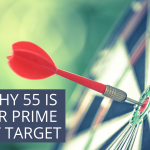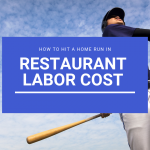When Restaurant Menu Design Can Help Lower Food Cost
When it comes to restaurant menu design, you can add pictures to your menu or alter font styles and sizes, but you won’t make much of a difference in your food cost or profits if you don’t know what your menu items should be priced. Without recipe costing cards, you can’t properly apply effective restaurant menu design, aka menu engineering.
Recipe costing cards tell you what it costs to make a menu item – right down to each piece of lettuce and tomato and each ounce of special sauce. The reality is most independent restaurants don’t even know what each dish they put on a plate costs to serve, forget about the side dishes and sauces. What I hear a lot is, “I’ve got all the costs in my head.”
Want to hear the truth about that? What you think the costs are and what they really are is usually very different.
Now, I already wrote an article on recipe costing cards and why they’re so important. You can read it here. You can also watch this thorough explanation for creating recipe costing cards.
If you have recipe costing cards in place and then want to modify your restaurant menu design to drive sales of your most profitable menu items, the rest of this article is for you.
Once you have recipe costing cards for your main dishes, and hopefully for every batch recipe, soup, etc., you can figure out which menu items are the ones you want to sell more of. To figure this out, follow these steps:
- Input all of your recipe costs into your POS system and then run an item-by-item sales mix report for at least a month, or better yet, three. This report will give you what your ideal or theoretical food cost should be based on what customers have purchased.
- Once you have this report, you will want to identify changes that can be made to decrease your cost. You can look to purchase different products of like or better quality but cost less. You can reduce the portion sizes. An extra item here and another one there can have a dramatic impact on your costs. A good way to gauge what you can change is to monitor your garbage cans. You’ll see what’s being over served because it will be in the trash.
- You can use this same report to identify changes that can be made to increase your profits. To increase your profits you should identify items that make you the most money. Then you will want to design your menu to influence your guests’ purchasing decisions by doing some menu merchandising. Menu merchandising is a restaurant owner’s best tool to increasing profits.
If you’ve skipped ahead and still don’t have up-to-date and accurate recipe costing cards in place, the following strategies won’t work long term. But once you know your dogs from your stars and what each menu item is costing you to make, restaurant menu engineering continues with restaurant menu design tactics, such as the following ideas, to influence purchasing behavior. Here are just a few:
- Place high-profit items where your customers are most likely to look first. There have been studies that show where a customer looks first and then the path they take with their eyes. These studies show eye movement for a one, two and three panel menu.
- Don’t let your menu be a price list. A price list menu has an item name and then to the far right it lists the price all by itself. Stick that price at the end of the item description without a dollar sign and one font size smaller. Let your guest read the description and want it first, rather than shop the price they want to pay and then pick.
- If you have categories, such as appetizers, that have 10 items in them, understand that the first, second and last items will sell the most in that category. Use this knowledge to place your priority (i.e., most profitable) items in those spots to move them.
- Make an item stand out with a box, highlight, star, picture, etc. These items will sell. If you are a restaurant where pictures are appropriate, if you put a photo of the item in the menu, be prepared. You will sell the heck out of it. I’m not kidding.
- Reduce the number of items you have on your menu. Fewer menu items means less money in inventory sitting on your shelves, less waste, less labor and consistent food.
Take any of these actions to lower food cost and increase sales. If you use restaurant management software like SMART Systems Pro, you can automate much of this work, especially in cases when your POS system integrates with our software.
If you’d like to learn more about how to effectively use restaurant menu design and accurately monitor it, request a free demo of our restaurant management software, SMART Systems Pro.
For systems you can use to lower food cost in your restaurant, download our free report, 3 Simple Systems to Cut Food Cost 2-3% Overnight. You can also view tips to lower food cost in your restaurant on this YouTube channel playlist.





